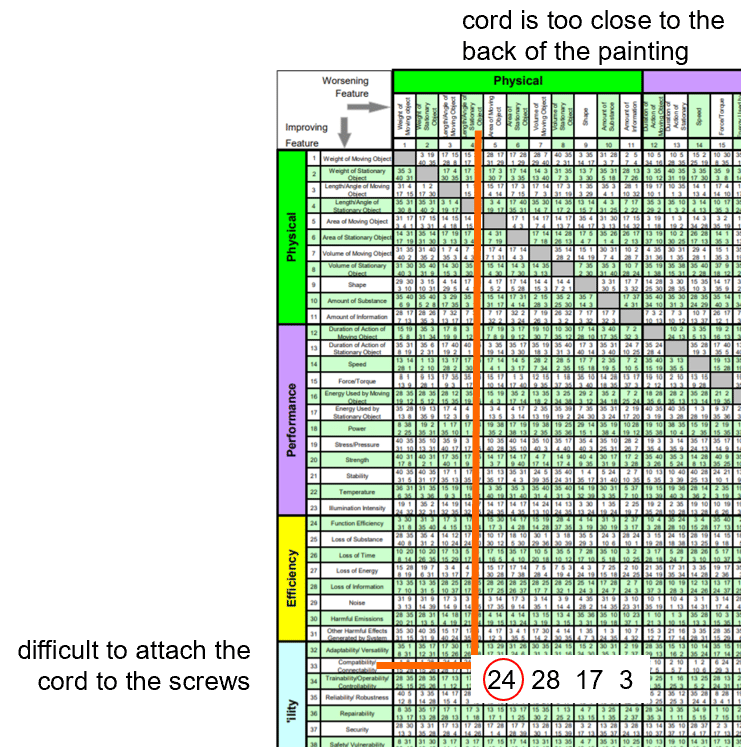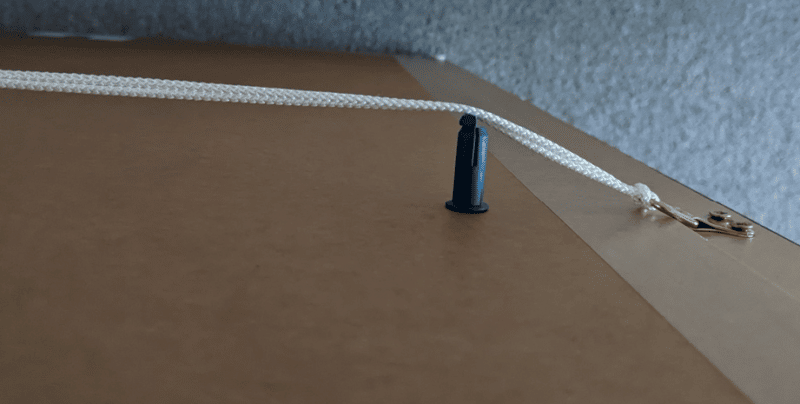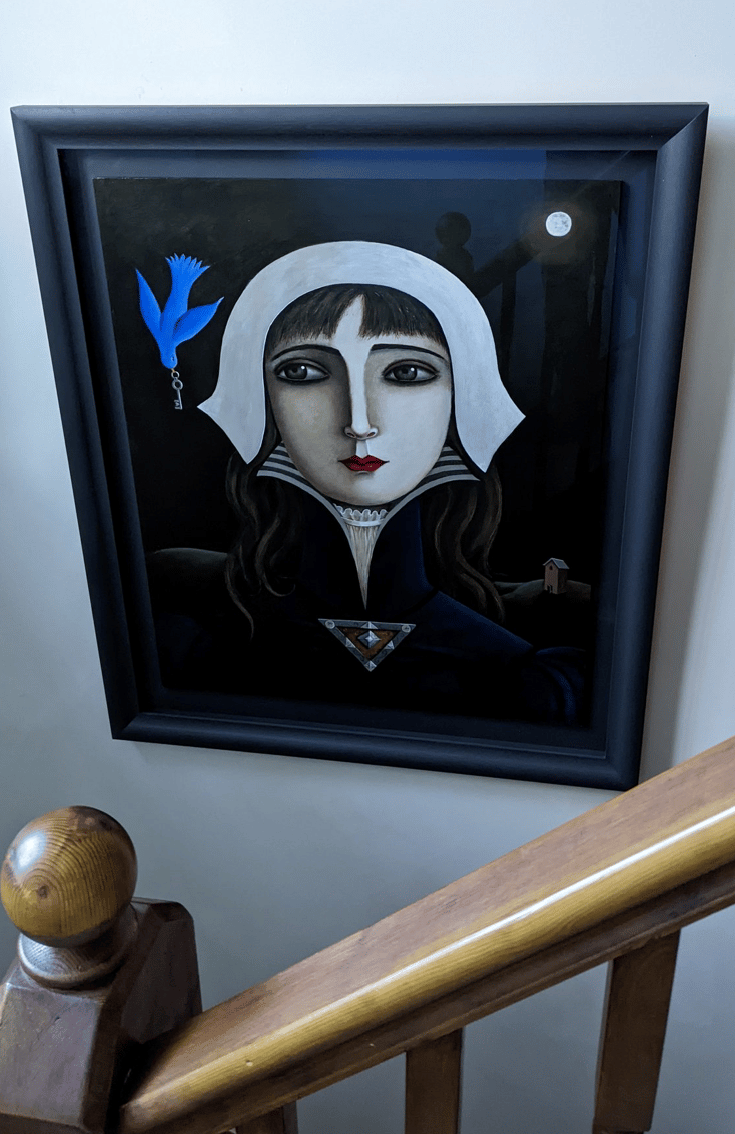I bought a painting. A big one. Big enough that there was only one bit of wall large enough to accommodate it. The only problem was that the wall was half way up the stairs, and the picture was heavy. Not so heavy that I couldn’t lift it, but heavy enough that I couldn’t lift it to the required height for very long. Not long enough as it turned out to be able to manipulate the cord at the back of the picture to sit on the pair of screws I’d put in the wall.
A possible solution, of course, would have been to construct some kind of platform on the staircase so that I could support the weight of the painting while I stuck my head over the top or around the side to see when the cord was in the right position over the screws. Or, I suppose, I could’ve got someone to help me. The problem there was that the someone has a bad back at the moment. And, in any event, I’m too lazy to consider the possibility of creating and assembling the stable platform.
And so, in a classic case of laziness being the step-mother of invention, it was time to get out the Contradiction Matrix, and recognise that I wasn’t the first person in the world to want to be able to connect something to something else, and was struggling to do it because there wasn’t sufficient gap at the back of the painting to either see what I was doing or to ensure the hanging cord was sticking out far enough to ensure it would hook onto the screws. Here’s what that looks like when mapped onto the Matrix:

The most frequently used strategy used by people before me was Inventive Principle 24, Intermediary, one of the options of which told me that I might want to use an intermediary that was temporary in nature. Something that might hold the cord away from the back of the painting so that the likelihood of hooking on the screws was good, but that then disappeared so that after the cord was in place, the painting wouldn’t be sticking out.

Here’s the temporary Intermediary I ended up with – a deliberately slightly-unstable pair of rawl plugs, one on each side of the painting. Lift the painting up, ask the bad-back inflicted assistant to stand at the top of the stairs to tell me when the cord was above the screws, and hey presto, a few seconds later, there’s a beautifully hung painting and two rawl plugs waiting to be picked up at the bottom of the stairs.

